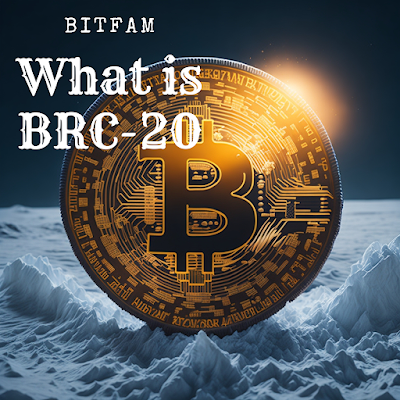The emergence of token standards has revolutionized the blockchain industry, enabling the creation of various digital assets and facilitating decentralized applications. While Ethereum's ERC-20 standard is widely known, the Bitcoin network has now entered the tokenization realm with its own standard called BRC-20. In this article, we'll delve into the unique characteristics of BRC-20 tokens, their relationship with the Bitcoin blockchain, and the potential they hold within the rapidly evolving world of memecoins.
Understanding BRC-20 Tokens:
BRC-20 is a novel token standard introduced on the Bitcoin network, drawing inspiration from Ethereum's ERC-20 standard. Unlike ERC-20 tokens, BRC-20 tokens leverage the Ordinals protocol instead of smart contracts for their creation and trading. This distinctive approach requires the use of a Bitcoin wallet, ensuring that BRC-20 tokens are minted and transferred exclusively within the Bitcoin ecosystem.
The Power of Ordinals:
The foundation of the BRC-20 token standard lies in the Ordinals protocol, which revolutionizes the way information is stored on the Bitcoin blockchain. The ingenious work of Casey, the protocol's creator, involved indexing and tracking every Satoshi—the smallest unit of Bitcoin—throughout the network. By inscribing arbitrary content on these Satoshis, Ordinals unlocked the potential for native Bitcoin digital collectibles or Non-Fungible Tokens (NFTs).
Enter BRC-20: Inscribing JSON on Satoshis:
On March 8, Domodata proposed the creation of a fungible token called BRC-20, capitalizing on the Ordinals protocol's capabilities. This revolutionary concept allowed JavaScript Object Notation (JSON) to be inscribed on Satoshis, effectively creating tokens that could be traded like any other digital asset. The simplicity and efficiency of BRC-20 tokens opened up new horizons for tokenization on the Bitcoin network.
Comparing BRC-20 and ERC-20:
While BRC-20 tokens share similarities with Ethereum's ERC-20, there are key differences that set them apart. The most notable distinction lies in the underlying mechanisms of their respective networks. BRC-20 tokens operate within the Bitcoin network, utilizing its Proof of Work (PoW) consensus mechanism. In contrast, ERC-20 tokens rely on Ethereum's Proof of Stake (PoS) mechanism. Additionally, BRC-20 tokens lack the smart contract capabilities inherent in ERC-20, which allows for the creation of diverse programmable tokens and financial products.
Benefits and Limitations of BRC-20:
The BRC-20 token standard brings several advantages to the Bitcoin network. Fungibility, security, and compatibility are among its key benefits. BRC-20 tokens inherit the robust security of the Bitcoin blockchain, making them resilient to hacking attempts. Additionally, their compatibility with existing Bitcoin infrastructure ensures seamless integration with wallets, exchanges, and other platforms.
However, BRC-20 tokens do face limitations. As they are not EVM-compatible, developers may find it challenging to access certain resources on the network. This could potentially limit the ecosystem's growth and adoption. Moreover, the increased block space consumption by BRC-20 transactions may lead to higher gas fees and network congestion.
The Road Ahead for BRC-20:
Despite the limitations, BRC-20 tokens have gained considerable traction within the blockchain industry. With over 14,000 tokens issued, notable examples like ORDI, PIZA, MEME, and MOON have showcased the potential of the BRC-20 standard. As the Bitcoin blockchain continues to evolve, the introduction of BRC-20 and the Ordinals protocol paves the way for further innovation and possibilities on the Layer-1 blockchain.
Looking ahead, the future prospects for BRC-20 tokens are promising. While they may not currently support smart contracts like ERC-20 tokens, advancements in the Bitcoin network could potentially introduce enhanced programmability and expand the capabilities of BRC-20 tokens. This would unlock a new wave of decentralized applications and financial products on the Bitcoin blockchain, further cementing its position as a versatile platform.
Moreover, the security offered by the Bitcoin network is unparalleled. With its robust Proof of Work mechanism, Bitcoin provides a high level of protection against hacking and tampering attempts. This security is inherent in BRC-20 tokens, ensuring that users can confidently transfer and trade their assets on the blockchain.
The introduction of BRC-20 tokens represents a significant milestone for the Bitcoin network. While Bitcoin has traditionally been associated with its native cryptocurrency, the tokenization of assets opens up new avenues for innovation and financial inclusion. As the ecosystem evolves and matures, it will be exciting to witness how BRC-20 tokens and the Ordinals protocol shape the future of tokenization on the Bitcoin network.
In conclusion, BRC-20 tokens bring token standardization to the Bitcoin network, enabling the creation and transfer of fungible assets. While distinct from Ethereum's ERC-20, BRC-20 tokens leverage the power of the Bitcoin blockchain and the Ordinals protocol to unlock new possibilities. With its security, compatibility, and growing market capitalization, BRC-20 is poised to play a significant role in the evolving world of memecoins and tokenization on the Bitcoin network.

